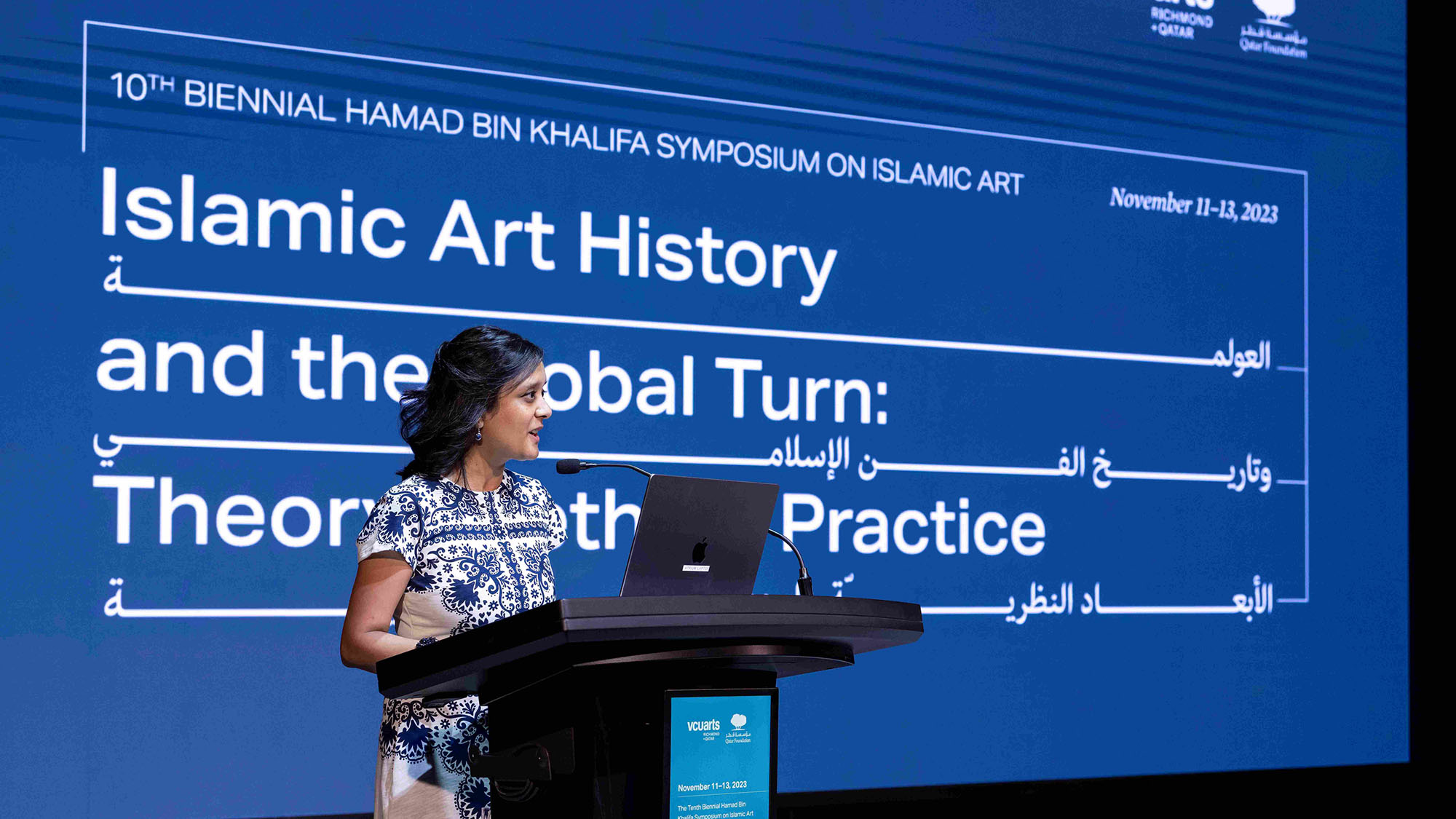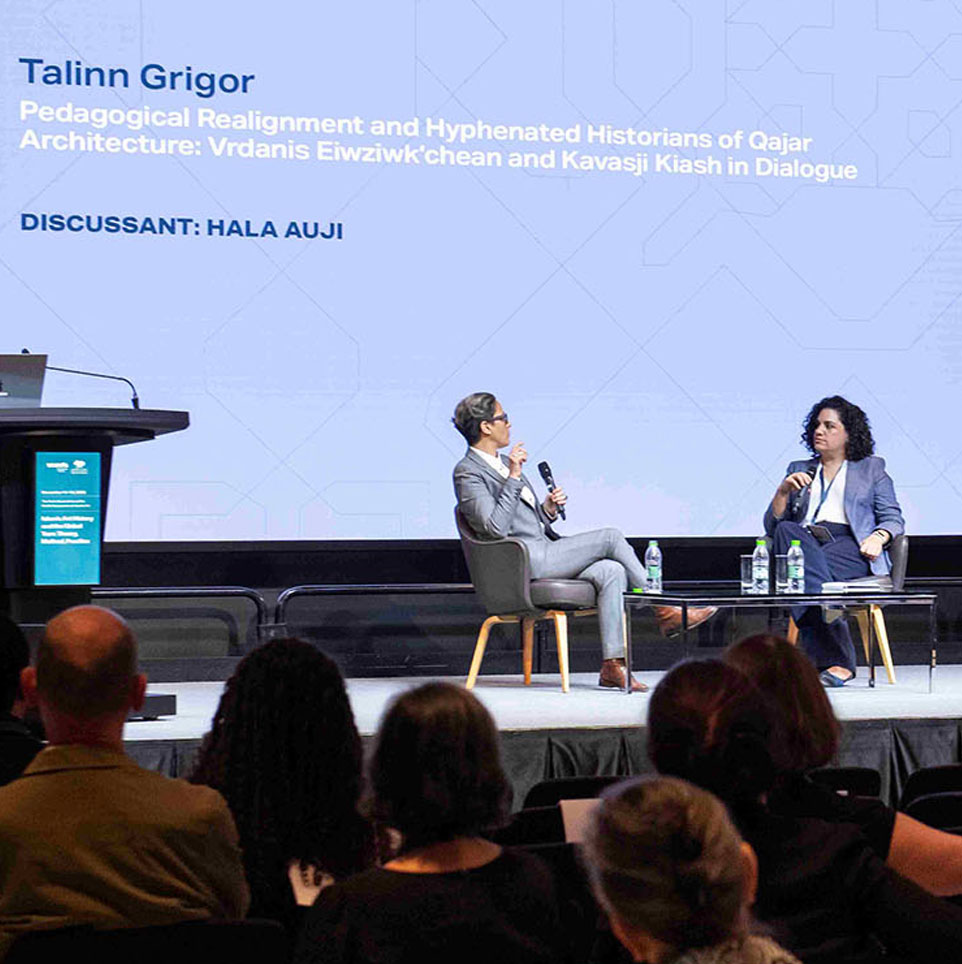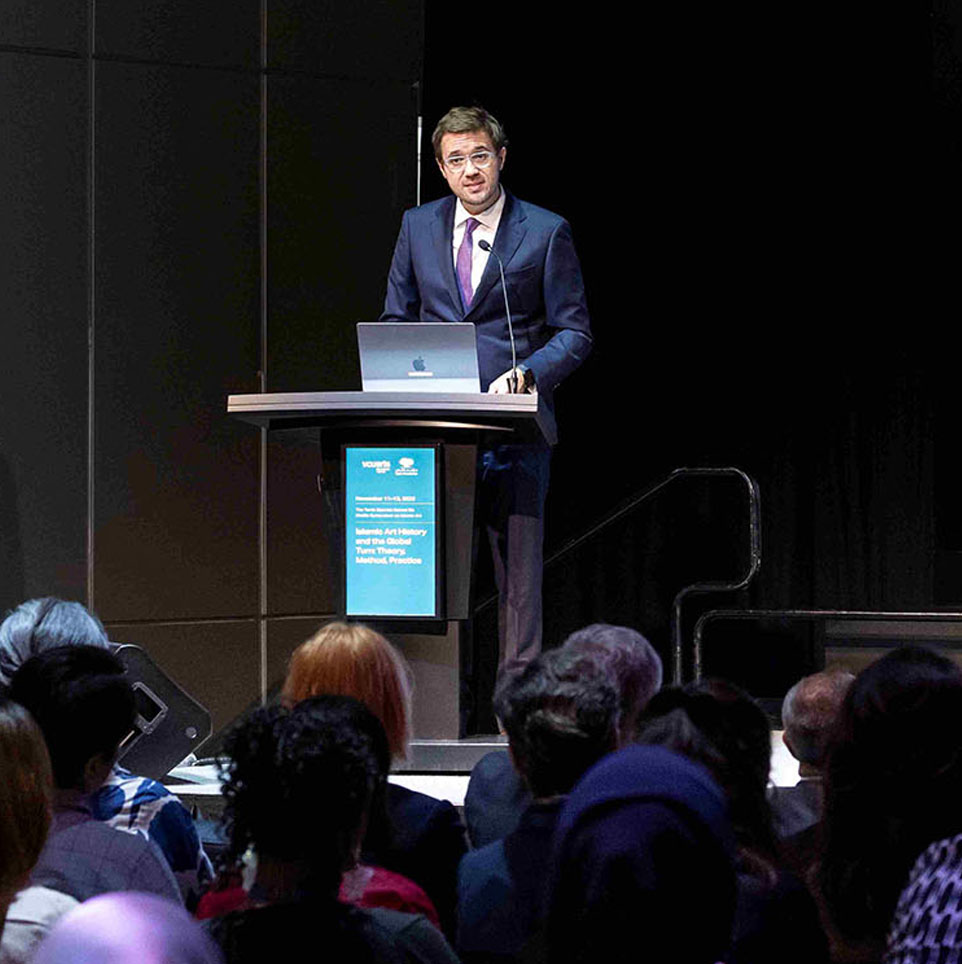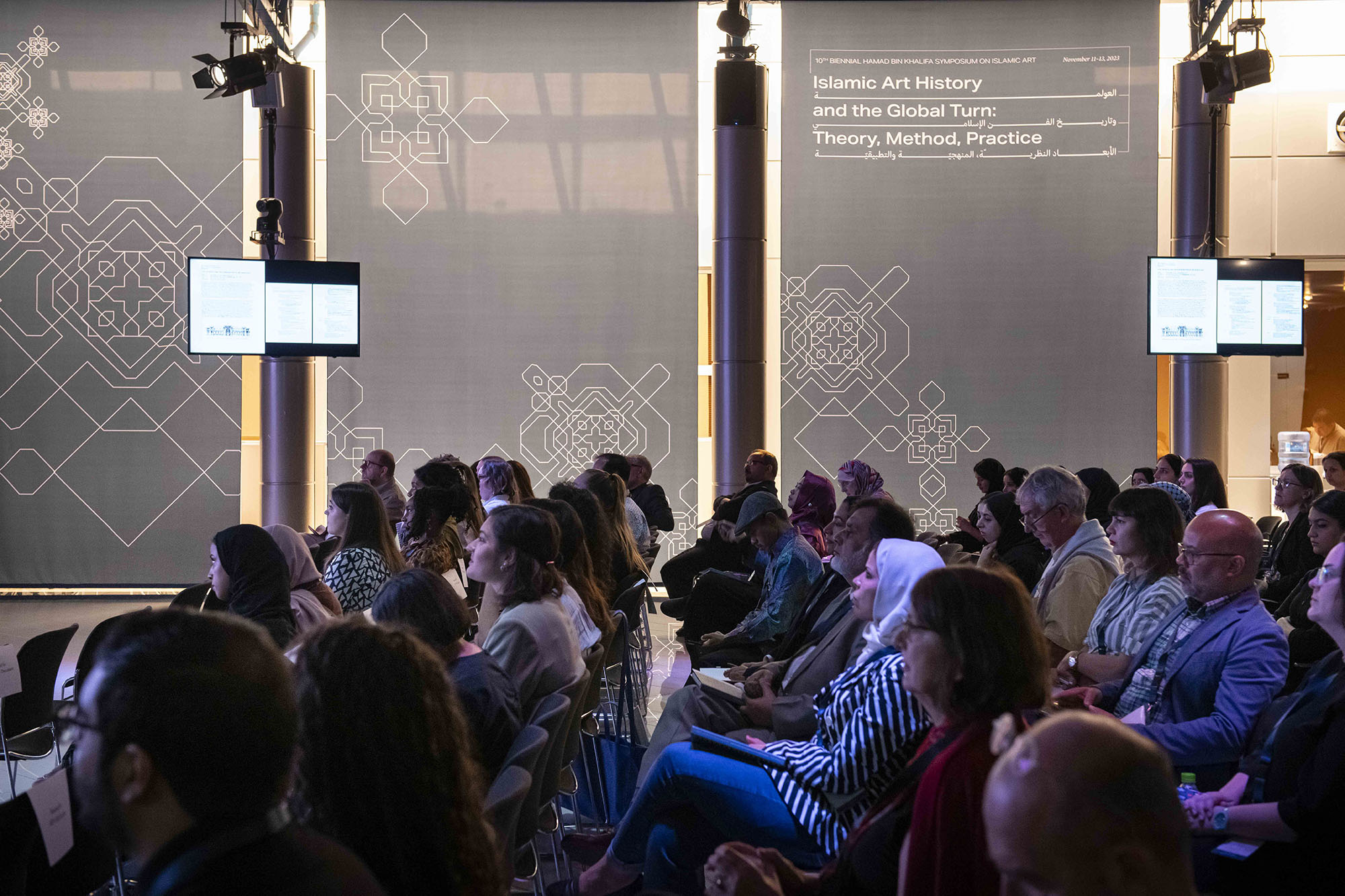- Academics
- Admissions & Enrollment Services
- Research
- Academic & Creative Spaces
- Strategic Partnerships
- Our Impact
- Student Affairs
- Campus & Community
VCUarts Qatar Holds Tenth Biennial Hamad Bin Khalifa Symposium on Islamic Art
November 26, 2023
Categories

The theme of this year’s symposium was ‘Islamic Art History and the Global Turn: Theory, Method, Practice’
Scholars at three-day conference focused on Islamic Art History and the Global Turn




VCUarts Qatar held the tenth biennial Hamad bin Khalifa Symposium on Islamic Art at its campus recently.
The theme of this year’s symposium was ‘Islamic Art History and the Global Turn: Theory, Method, Practice’.
The conference was attended by dignitaries, senior leadership from QF including Dr. Francisco Marmolejo, President of Higher Education, Qatar Museums, and scholars and researchers from around the globe. The sessions were also open to the public, free of charge.
Globalization’s sociological and economic concerns have extended to issues related to art and visual culture, including the varied approaches used to study art history. The Tenth Biennial Hamad bin Khalifa Symposium on Islamic Art examined how art history’s concerns with the global turn, as well as associated calls for decolonial, diverse, inclusive, and equitable histories, have been taken up by scholars, educators, curators, and related practitioners of Islamic art history.
Amir Berbić, Dean, VCUarts Qatar, welcomed the gathering and said, “In the 19 years of the Symposium’s history, this is the sixth time it has taken place in Doha. That should not come as a surprise. Qatar’s strategic location in the Arabian Gulf, at the crossroads of diverse civilizations, has historically facilitated the exchange of artistic ideas and cultural influences. As a crucial hub for the study of Islamic art, Qatar’s vibrant cultural scene and its commitment to centering Islamic heritage not only enriches its own cultural landscape but also contributes significantly to the broader global discourse on the subject.
“Institutions such as VCUarts Qatar are pivotal in this endeavor, integrating Islamic art into their academic programs and research endeavors. By offering specialized courses, dedicated faculty, and cutting-edge resources, Qatar is providing a robust platform for students and scholars to delve into the complexities of Islamic art. Furthermore, the commitment to research in this field is evident in the collaborations and initiatives such as this Symposium.
“Through talks and discussions by leading global experts across varied specialties in researching, teaching, and curating diverse art histories, this Symposium aims to be a platform for dialogue, insight, and shared knowledge related to our position in Doha vis-a-vis the wider Islamic world.”
The keynote address was delivered by Finbarr Barry Flood, Ph.D. Flood is the director of Silsila: Center for Material Histories and William R. Kenan, Jr., Professor of the Humanities at the Institute of Fine Arts and Department of Art History, New York University.
Speaking after the opening of the conference, Flood said, “I was keen to attend this conference in Qatar, a country has done much to explore historical connections between the Gulf region and the rest of the world, whether in the form of the Museum of Islamic art or the Bin Jelmood House, both of which I was fortunate enough to visit during my stay. Taken together, they remind us of both the productive and the more exploitative aspects of connectivity – both are part of a story of long-distance connections that precede our own era of globalization.”
The art historian continued, “In an age of rapid globalization, Art history, specifically Islamic art history, offers evidence that reveals the intensity of contact this part of the world had with the broader or global world. My lecture was about the kinds of material evidence that pointed to these cross-regional, cross-cultural connections that waxed and waned across centuries.”
Flood spoke about the relevance of the conference.
“There is this fixation on the present; the assumption that the times we live in – this digitized, technology-driven era – is unique for the connections between regions that it has fostered. While the intensity and speed of those connections may be something new, the very fact of connectivity is not. Hence, it is crucial that the connections this region enjoyed in the past are not forgotten but are also discussed and appreciated. From that perspective, conferences such as this play a crucial role in raising awareness, especially for current and future generations.”
“As a researcher and a teacher, my hope is that such discussions will make students understand that the cultural values they have inherited are not necessarily universal; that there are other ways of thinking about the same topic or issue or value rooted in other times and places; that they would prompt self-examination of one’s own beliefs and an appreciation for those of others,” he said.
Since it was first held in 2004, the symposium has grown to be one of the most prestigious events focusing on Islamic art in the world, in the process making the latest and most interesting scholarship in this growing field available and accessible to a wide audience, ranging from students and scholars, to artists, architects, designers and the interested public.
Photographs by Raviv Cohen.

